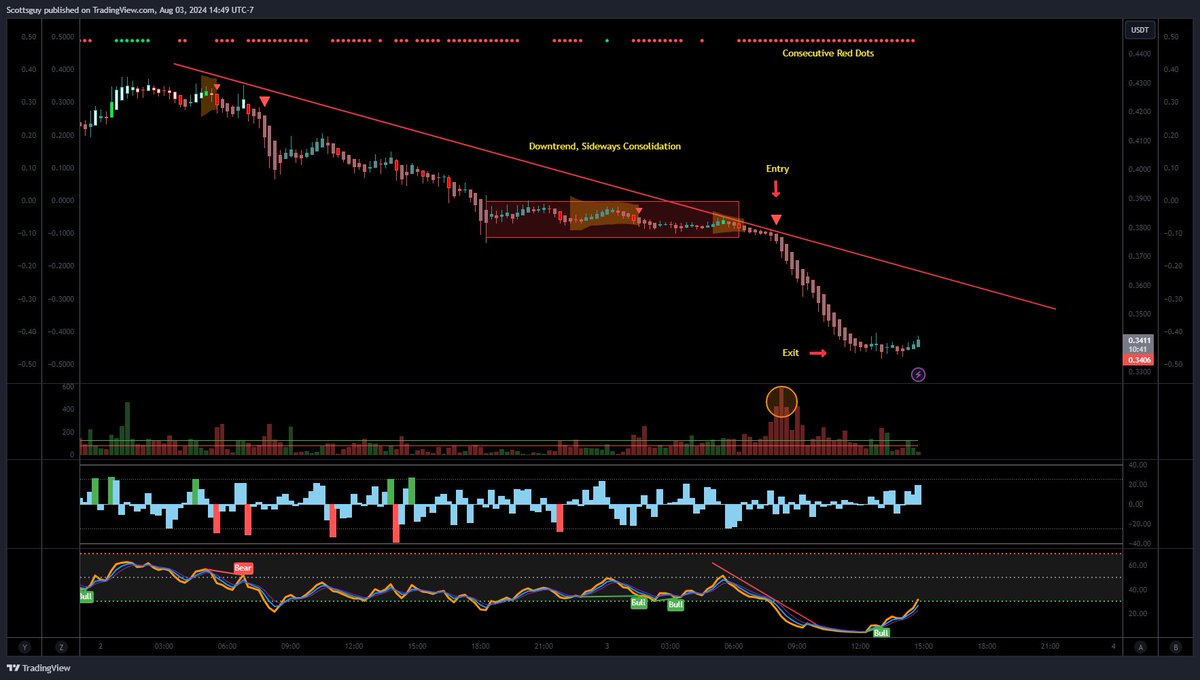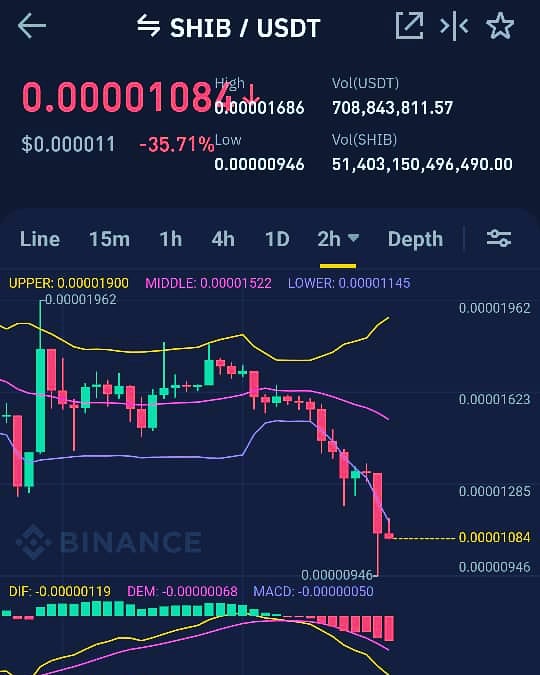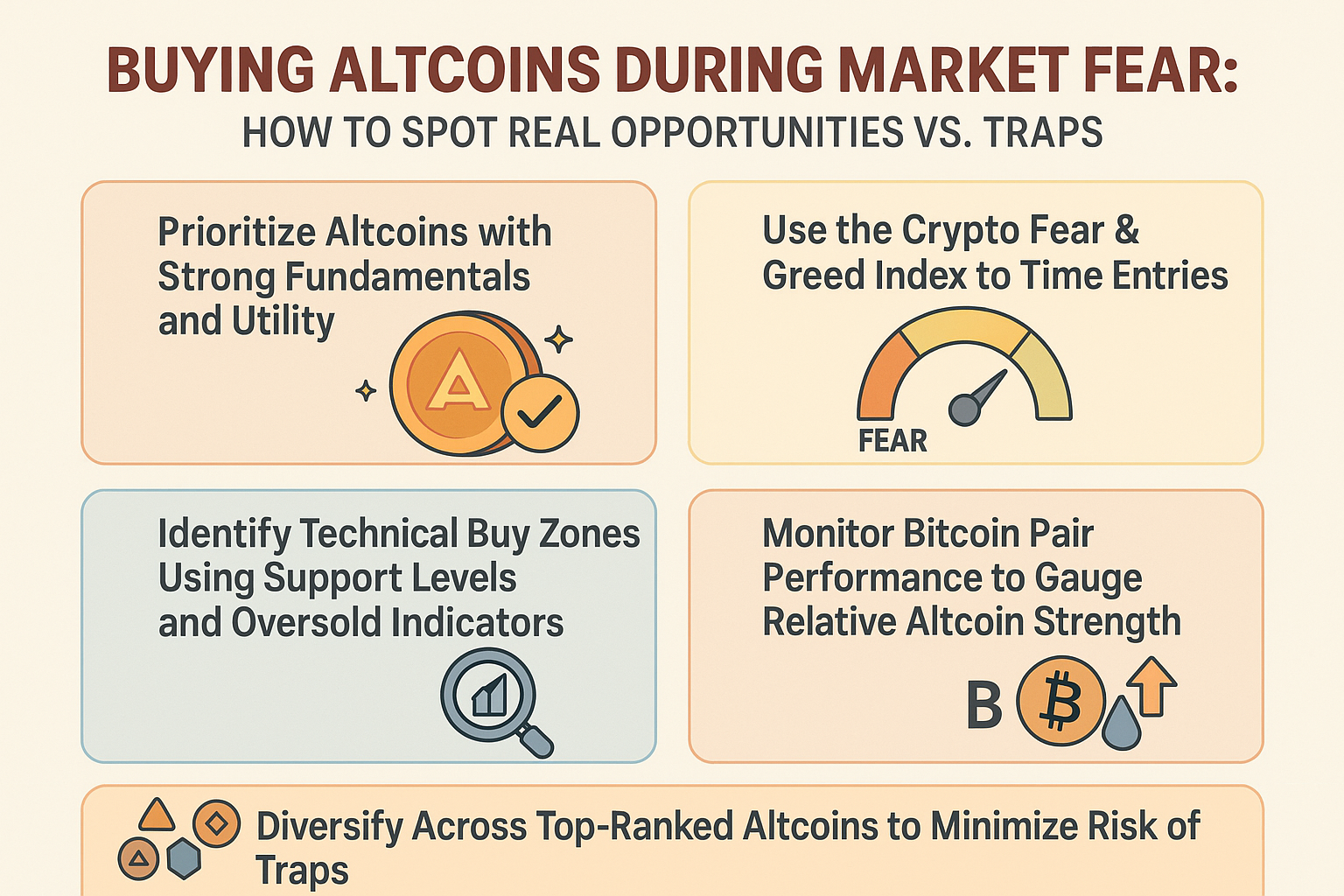Periods of extreme market fear often trigger sharp sell-offs in altcoins, driving prices to levels that can look attractive to opportunistic traders. Yet, the difference between buying into a genuine opportunity and falling for a value trap is razor-thin. To navigate these turbulent moments, it’s essential to apply disciplined strategies that separate fundamentally strong projects from fleeting hype.

1. Prioritize Altcoins with Strong Fundamentals and Utility
When panic grips the crypto market, weak projects tend to collapse fastest. Focus on altcoins with robust fundamentals—those with active development teams, real-world use cases, and transparent roadmaps. Look for tokens solving unique problems or providing actual utility beyond speculation. Projects that continue shipping updates and growing their user base during downturns are far less likely to be short-term traps.
2. Use the Crypto Fear & Greed Index to Time Entries
The Crypto Fear & Greed Index is a powerful sentiment tool that aggregates data like volatility, social trends, and trading volumes to gauge overall market mood. Extreme fear readings often coincide with local bottoms, as investors capitulate and sell at a loss. By tracking this index (see CMC’s Crypto Fear and Greed Index), traders can better time their entries—waiting for peak fear before deploying capital into fundamentally sound altcoins.
3. Identify Technical Buy Zones Using Support Levels and Oversold Indicators
Even when sentiment is bleak, technical analysis offers objective tools for finding attractive entry points. Key support levels—historical price floors where buyers previously stepped in—can signal areas of high probability for reversals. Combine this with oversold indicators like the Relative Strength Index (RSI) or stochastic oscillators; values below 30 (or 20) often indicate short-term capitulation selling has peaked.
Top Strategies to Spot Real Altcoin Opportunities
-

Use the Crypto Fear & Greed Index to Time Entries: Leverage the Crypto Fear & Greed Index to identify periods of extreme fear, which often coincide with potential buying opportunities as prices may be undervalued.
-

Identify Technical Buy Zones Using Support Levels and Oversold Indicators: Analyze charts for established support zones and use tools like the Relative Strength Index (RSI) to spot oversold conditions, signaling possible entry points.
-

Monitor Bitcoin Pair Performance to Gauge Relative Altcoin Strength: Compare altcoin performance against BTC pairs on major exchanges like Binance to assess if an altcoin is outperforming or lagging relative to Bitcoin during market downturns.
This disciplined approach helps filter out noise and keeps emotions in check—a must-have edge when volatility spikes.
4. Monitor Bitcoin Pair Performance to Gauge Relative Altcoin Strength
During periods of high fear, many traders overlook the importance of analyzing how altcoins perform against Bitcoin (BTC) pairs. If an altcoin is holding steady or even gaining value relative to BTC while the broader market sells off, it’s a powerful signal of underlying strength and unique demand. Conversely, if an altcoin consistently bleeds value against BTC during fearful conditions, it may be a sign of weak conviction or deteriorating fundamentals.
Tracking BTC pairs offers a clearer view of true relative performance—removing the noise created by USD price swings. This technique can help you spot which projects are genuinely accumulating interest from sophisticated investors versus those simply following overall market direction.
5. Diversify Across Top-Ranked Altcoins to Minimize Risk of Traps
No matter how rigorous your research, buying altcoins during extreme fear always carries risk. To avoid falling victim to isolated failures or “dead cat bounces,” diversify across several top-ranked projects with proven liquidity and community support. Concentrating your bets on just one or two tokens increases exposure to idiosyncratic risks—such as smart contract exploits, regulatory shocks, or team setbacks.
Look for altcoins consistently ranked in the top 50 by market capitalization and with active trading volumes. This approach not only spreads risk but also increases your chances of capturing outsized gains when sentiment recovers. Remember: even in bear phases, capital tends to rotate into quality first.
Putting It All Together: A Disciplined Framework for Buying Altcoins During Fear
The most successful crypto traders treat periods of panic as opportunities—but only with disciplined frameworks that combine fundamental analysis, sentiment gauges like the Fear & Greed Index, technical buy zone identification, BTC pair monitoring, and prudent diversification.
Here’s a visual checklist summarizing these strategies:
Staying systematic prevents emotional decisions and helps you capitalize on genuine value dislocations rather than chasing fleeting rebounds or falling into liquidity traps. As always, size positions responsibly and manage risk—market fear can persist longer than expected.
If you want deeper insights on navigating crypto panics and refining your crypto market fear strategy, explore community discussions like this Reddit thread on trading altcoins.


